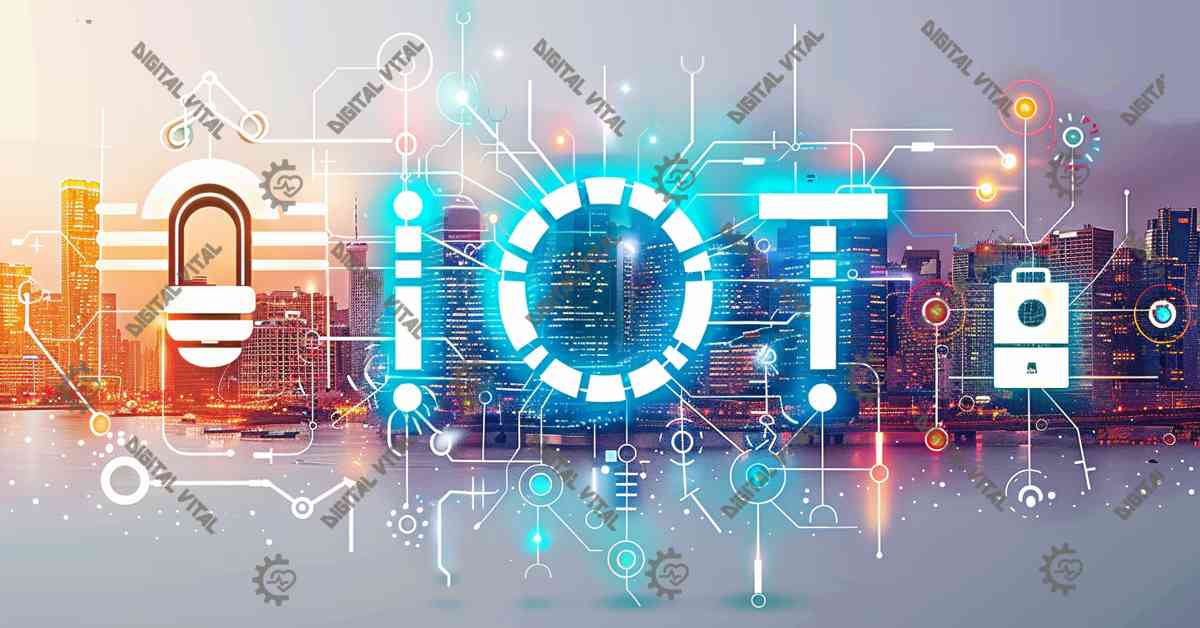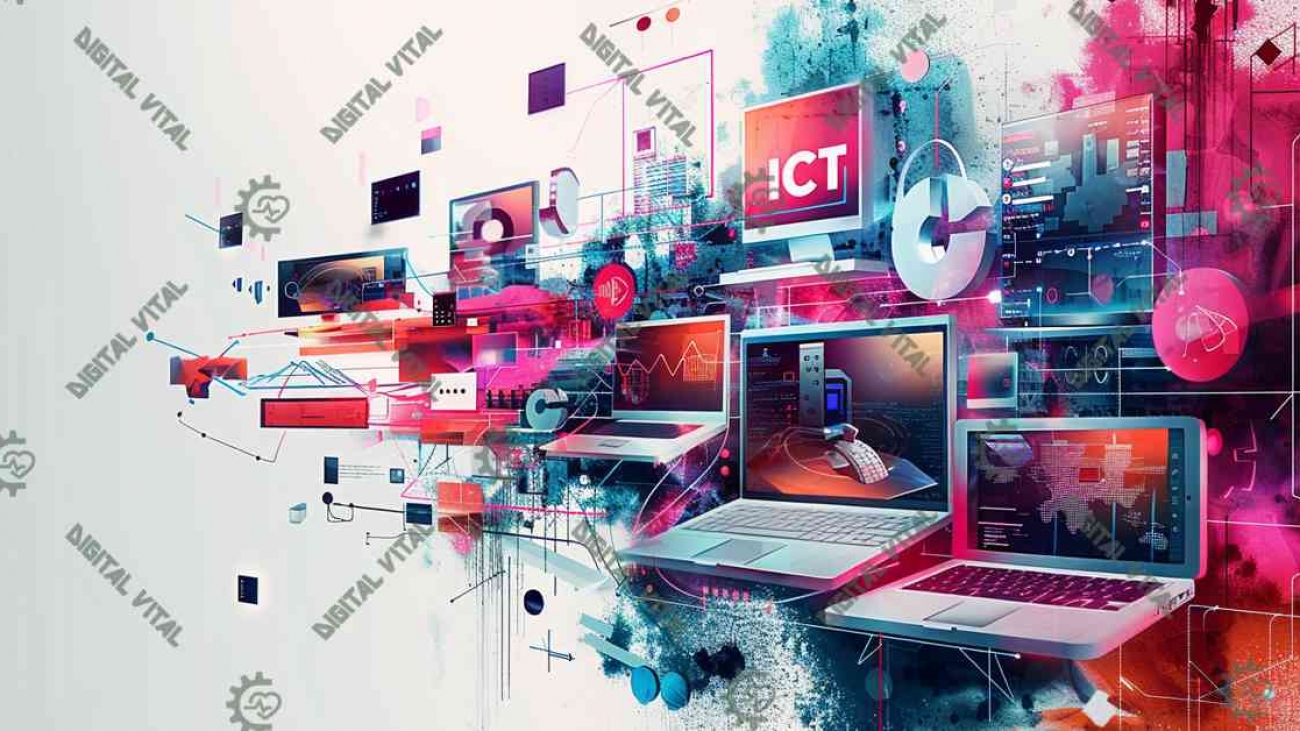Information and Communication Technology (ICT) has become an integral part of our daily lives, transforming the way we live, work, and interact. From the internet and mobile phones to cloud computing and artificial intelligence, ICT encompasses a wide range of technologies that facilitate the processing, storage, and exchange of information. This article explores the various dimensions of ICT, its impact on different sectors, and the future trends shaping its development.
Keywords: ICT, Information and Communication Technology, digital transformation, internet, mobile technology, cloud computing, artificial intelligence, digital economy, ICT in education, ICT in healthcare
Table of Contents
Understanding Information and Communication Technology
Information and Communication Technology (ICT) refers to the convergence of computers, telecommunications, software, and audio-visual systems, enabling users to access, process, and share information. The rapid advancement of ICT over the past few decades has led to the creation of a highly interconnected world, where information flows seamlessly across borders and devices.
Components of Information and Communication Technology
ICT comprises several key components:
- Computing Devices: These include personal computers, laptops, tablets, and smartphones, which are used for accessing and processing information.
- Telecommunications: This encompasses the infrastructure and technologies that enable communication over distances, such as the internet, telephone networks, and satellite systems.
- Software and Applications: Software programs and applications facilitate various tasks, from word processing and data analysis to social networking and online shopping.
- Data Storage and Management: This involves technologies and systems for storing and managing data, such as cloud computing, databases, and data centers.
- Audio-Visual Systems: These include technologies for creating, processing, and transmitting audio and visual content, such as digital cameras, video conferencing tools, and multimedia platforms.
The Impact of ICT on Various Sectors
The widespread adoption of ICT has had a profound impact on various sectors, driving digital transformation and enabling new ways of working and living.

Education
ICT has revolutionized education by providing new opportunities for learning and teaching. The integration of digital technologies in classrooms and online learning platforms has transformed traditional educational models, making education more accessible, interactive, and personalized.
E-Learning and Online Education: The advent of e-learning platforms, such as Coursera and edX, has democratized access to education, allowing learners from around the world to access high-quality courses from top universities and institutions. These platforms offer a wide range of subjects, from computer science and business to humanities and arts, enabling learners to acquire new skills and knowledge at their own pace.
Interactive Learning Tools: ICT has also enabled the development of interactive learning tools, such as educational apps, virtual labs, and simulations. These tools enhance the learning experience by providing hands-on, immersive experiences that engage students and improve their understanding of complex concepts. For example, virtual reality (VR) and augmented reality (AR) technologies allow students to explore historical sites, conduct virtual science experiments, and visualize abstract mathematical concepts.
Distance Learning: The COVID-19 pandemic highlighted the importance of ICT in education, as schools and universities around the world transitioned to remote learning. Video conferencing tools, such as Zoom and Microsoft Teams, played a crucial role in enabling live, interactive classes, while learning management systems (LMS) provided a platform for delivering course materials and assessments.
Healthcare
ICT has significantly impacted healthcare, improving patient care, enhancing medical research, and streamlining administrative processes. The integration of digital technologies in healthcare has led to the development of innovative solutions that address some of the most pressing challenges in the sector.
Telemedicine: Telemedicine, which involves the use of ICT to provide remote medical consultations and services, has become increasingly popular. Platforms like Teladoc and Amwell enable patients to connect with healthcare providers via video calls, receive medical advice, and even get prescriptions without having to visit a clinic. This has been particularly beneficial for patients in rural or underserved areas, where access to healthcare facilities may be limited.
Electronic Health Records (EHRs): The adoption of electronic health records has transformed the way patient information is managed and shared. EHR systems allow healthcare providers to access and update patient records in real-time, improving the accuracy and efficiency of medical care. EHRs also facilitate better coordination among healthcare providers, reducing the risk of medical errors and ensuring continuity of care.
Health Monitoring and Wearable Devices: ICT has enabled the development of wearable health devices, such as fitness trackers and smartwatches, that monitor various health metrics, such as heart rate, physical activity, and sleep patterns. These devices provide individuals with valuable insights into their health and encourage healthier lifestyles. In addition, remote monitoring technologies allow healthcare providers to track patients’ conditions and intervene when necessary, improving the management of chronic diseases.
Business and Commerce
ICT has transformed the business landscape, enabling new business models, enhancing productivity, and improving customer experiences. The integration of digital technologies in business operations has driven significant changes in how companies operate and compete in the global market.
E-Commerce: The rise of e-commerce platforms, such as Amazon and Alibaba, has revolutionized the retail industry, providing consumers with the convenience of shopping online and having products delivered to their doorstep. E-commerce has also opened up new opportunities for small businesses and entrepreneurs to reach a global audience and grow their customer base.
Digital Marketing: ICT has transformed marketing strategies, with digital marketing becoming a key component of business growth. Companies leverage social media, search engine optimization (SEO), email marketing, and online advertising to reach and engage with their target audience. Digital marketing tools, such as Google Analytics and HubSpot, provide valuable insights into consumer behavior and help businesses optimize their marketing efforts.
Cloud Computing: The adoption of cloud computing has enabled businesses to access and store data, run applications, and manage resources more efficiently. Cloud services, such as Amazon Web Services (AWS) and Microsoft Azure, offer scalable and flexible solutions that reduce the need for on-premises infrastructure. This allows businesses to focus on innovation and growth, rather than managing IT resources.
Remote Work: The COVID-19 pandemic accelerated the adoption of remote work, with ICT playing a crucial role in enabling employees to work from home. Video conferencing tools, collaboration platforms, and cloud-based applications have facilitated seamless communication and collaboration among remote teams. Companies like Slack and Trello have become essential tools for managing projects and maintaining productivity in a remote work environment.
Government and Public Services
Governments around the world are leveraging ICT to improve public services, enhance transparency, and engage with citizens. The digital transformation of government operations has led to more efficient and responsive public services.
E-Government: E-government initiatives involve the use of digital technologies to deliver government services online. This includes services such as online tax filing, license renewals, and permit applications. Platforms like Gov.uk in the United Kingdom and MyGov in India provide citizens with easy access to a wide range of government services, reducing the need for in-person visits and streamlining administrative processes.
Smart Cities: The concept of smart cities involves the integration of ICT to manage urban infrastructure and services more efficiently. Smart city initiatives leverage technologies such as IoT, big data, and AI to optimize traffic management, waste collection, energy consumption, and public safety. For example, Barcelona has implemented smart street lighting and waste management systems that improve energy efficiency and reduce operational costs.
Citizen Engagement: ICT has enabled governments to engage with citizens more effectively, promoting transparency and participation in decision-making processes. Social media platforms, mobile apps, and online forums provide channels for citizens to voice their opinions, access information, and participate in public consultations. This fosters a more inclusive and responsive governance model.
Future Trends
As technology continues to evolve, several emerging trends are shaping the future of ICT and its impact on society.

Artificial Intelligence and Machine Learning
Artificial intelligence (AI) and machine learning (ML) are at the forefront of ICT innovation, driving advancements in various fields. AI and ML enable machines to learn from data, make predictions, and automate complex tasks, leading to more efficient and intelligent systems.
AI in Healthcare: AI is being used to develop advanced diagnostic tools, personalized treatment plans, and predictive analytics. For example, AI algorithms can analyze medical images to detect diseases such as cancer at an early stage, improving patient outcomes. AI-powered chatbots and virtual assistants also provide patients with instant medical advice and support.
AI in Business: Businesses are leveraging AI to enhance customer experiences, optimize operations, and make data-driven decisions. AI-powered chatbots and virtual assistants provide personalized customer support, while predictive analytics help businesses anticipate market trends and customer preferences. AI is also being used to automate repetitive tasks, such as data entry and inventory management, freeing up employees to focus on more strategic activities.
Internet of Things (IoT)
The Internet of Things (IoT) refers to the network of interconnected devices that collect and exchange data. IoT is transforming various industries by enabling real-time monitoring, automation, and data-driven decision-making.

IoT in Agriculture: IoT technologies are being used to optimize agricultural practices, improve crop yields, and reduce resource consumption. Smart sensors and devices monitor soil moisture, temperature, and nutrient levels, providing farmers with real-time data to make informed decisions. IoT-enabled irrigation systems
automatically adjust water usage based on soil conditions, reducing water waste and improving efficiency.
IoT in Manufacturing: The concept of Industry 4.0 involves the integration of IoT in manufacturing processes to create smart factories. IoT devices monitor equipment performance, track inventory levels, and optimize production schedules. This leads to increased efficiency, reduced downtime, and improved product quality.
5G and Next-Generation Connectivity
The rollout of 5G networks promises to revolutionize ICT by providing faster, more reliable, and higher-capacity connectivity. 5G technology will enable new applications and services that require high-speed data transfer and low latency.
Enhanced Mobile Experiences: 5G will significantly improve mobile experiences by enabling faster download and upload speeds, smoother video streaming, and more reliable connections. This will enhance the performance of mobile applications and support the growth of mobile gaming, augmented reality, and virtual reality.
Smart Infrastructure: 5G will play a crucial role in the development of smart cities and infrastructure. The high-speed, low-latency connectivity will enable real-time monitoring and control of urban systems, such as traffic management, public safety, and environmental monitoring. This will lead to more efficient and sustainable urban environments.
Cybersecurity
As ICT becomes more integral to our daily lives, cybersecurity is becoming increasingly important. Protecting data, systems, and networks from cyber threats is essential to maintaining trust and ensuring the integrity of digital services.
Advanced Threat Detection: Cybersecurity technologies are evolving to detect and respond to sophisticated threats. AI and ML are being used to analyze network traffic, identify anomalies, and predict potential attacks. Advanced threat detection systems can automatically respond to threats in real-time, minimizing the impact of cyber incidents.
Data Privacy and Protection: With the increasing amount of data being generated and shared, protecting personal information and ensuring data privacy is crucial. Regulations such as the General Data Protection Regulation (GDPR) in the European Union and the California Consumer Privacy Act (CCPA) in the United States set guidelines for data protection and privacy. Organizations must implement robust data protection measures to comply with these regulations and safeguard user data.
Conclusion
The impact of ICT on society is profound and far-reaching, transforming various sectors and enabling new ways of working, learning, and living. From education and healthcare to business and government, ICT has driven digital transformation and created new opportunities for growth and innovation. As technology continues to evolve, emerging trends such as artificial intelligence, IoT, 5G, and cybersecurity will shape the future of ICT and its impact on our world.
For small businesses, employees, job seekers, and students interested in exploring the potential of ICT, DigitalVital offers comprehensive services to help you navigate and thrive in this evolving landscape. Whether you need a CV review, publishing support, or specialized further education, we are here to assist you.
Visit DigitalVital Hub to learn more about our consultancy services, and stay ahead of the curve by integrating ICT into your professional toolkit. Explore other articles on our platform to stay updated on the latest trends and insights in Information and Communication Technology.
By embracing the opportunities presented by ICT and addressing the challenges head-on, we can create a more connected, efficient, and sustainable future. Join us in leveraging the power of ICT to drive positive change and innovation in society.

